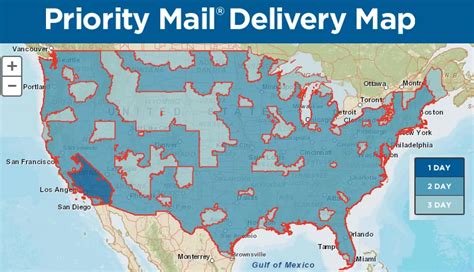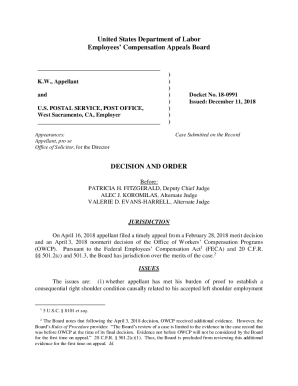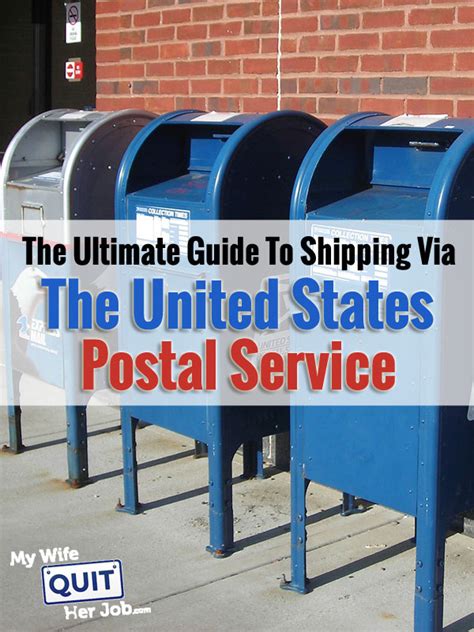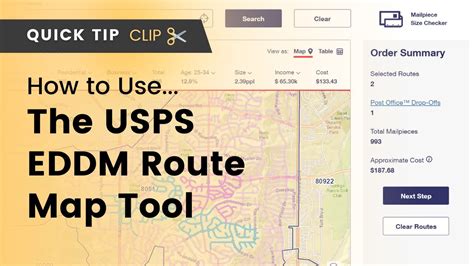Usps Delivery Routes

Welcome to this in-depth exploration of the complex world of USPS (United States Postal Service) delivery routes. USPS is an iconic federal agency that delivers an astonishing 47% of the world's mail, with a daily average of 125 million mail pieces delivered to over 160 million addresses across the United States.
In this article, we will delve into the intricacies of USPS delivery routes, shedding light on how they are designed, optimized, and executed to ensure efficient and reliable mail delivery. From the strategic planning behind route creation to the innovative technologies and methods employed by USPS carriers, we will uncover the fascinating logistics behind this vital public service.
As an integral part of American life and commerce, USPS delivery routes have a significant impact on the efficiency and accessibility of mail services. With a vast network of post offices, processing centers, and dedicated carriers, USPS manages an intricate operation to deliver mail to every address in the nation, regardless of geographical challenges or population density.
Designing USPS Delivery Routes: A Strategic Process

The process of designing USPS delivery routes is a complex undertaking that requires careful consideration of various factors. USPS utilizes a combination of advanced technology, data analytics, and on-the-ground expertise to create efficient and effective routes that meet the diverse needs of its customers.
Key Considerations in Route Design
When planning delivery routes, USPS takes into account a multitude of variables, including but not limited to:
- Geographical Factors: The physical layout of the area, including streets, neighborhoods, and landmarks, plays a crucial role in route design. USPS carriers must navigate through varying terrain, from urban centers with dense populations to rural areas with long distances between addresses.
- Population Density: The number of residents and businesses in an area directly impacts the volume of mail to be delivered. High-density areas require more frequent and quicker deliveries, while rural areas may have fewer stops but longer distances between them.
- Traffic Patterns: Understanding the flow of traffic in an area is essential for optimizing delivery times. USPS considers rush hours, school zones, and other factors that may affect the efficiency of the route.
- Mail Volume: The amount of mail to be delivered varies throughout the day and across different areas. USPS routes are designed to accommodate peak mail volumes, ensuring timely deliveries without overburdening carriers.
- Special Considerations: USPS also takes into account unique circumstances such as seasonal fluctuations (e.g., holiday mail surges), weather conditions, and local events that may impact mail delivery.
By analyzing these factors and more, USPS is able to create delivery routes that are tailored to the specific needs of each area, ensuring efficient and reliable mail service for all its customers.
Technological Innovations for Route Optimization

In recent years, USPS has embraced technological advancements to enhance the efficiency and accuracy of its delivery routes. These innovations have revolutionized the way routes are planned, monitored, and optimized, leading to significant improvements in service quality and carrier productivity.
Route Planning Software
USPS utilizes advanced route planning software that incorporates data analytics and machine learning algorithms to optimize delivery routes. This software takes into account various factors, such as the location of addresses, traffic patterns, and carrier workload, to generate the most efficient routes possible.
The software continuously learns and adapts, making real-time adjustments to routes based on changing conditions. It can suggest alternative routes to avoid traffic congestion or construction zones, helping carriers maintain timely deliveries. Additionally, the software can analyze historical data to identify patterns and trends, allowing USPS to anticipate and plan for future changes in mail volume or delivery needs.
GPS Tracking and Route Monitoring
USPS has implemented GPS tracking systems on its delivery vehicles, enabling real-time monitoring of carrier locations and route progress. This technology provides valuable insights into carrier performance and helps identify potential issues or inefficiencies in route execution.
With GPS tracking, USPS can monitor carrier speed, route deviations, and delivery times. This data is crucial for identifying carriers who consistently outperform expectations, as well as those who may require additional training or support. By analyzing carrier performance, USPS can make informed decisions to optimize routes and improve overall service quality.
Mobile Scanning Technology
USPS carriers are equipped with mobile scanning devices that allow them to electronically scan and track mail delivery. This technology not only provides proof of delivery but also enables real-time updates on mail status, ensuring transparency and accountability.
Mobile scanning improves efficiency by eliminating the need for manual logging and reduces the likelihood of errors or lost mail. It also provides valuable data for USPS to analyze delivery patterns, identify potential issues, and make data-driven decisions to further optimize routes and improve customer service.
The Role of USPS Carriers: Execution and Adaptability
USPS carriers are the backbone of the delivery system, responsible for executing the carefully planned routes and adapting to the dynamic nature of mail delivery. These dedicated professionals navigate a variety of challenges and variables to ensure timely and accurate mail delivery.
Daily Routine and Responsibilities
A typical day for a USPS carrier begins with sorting and organizing the mail for their assigned route. They must efficiently categorize and sequence mail pieces based on the delivery sequence, ensuring a smooth and efficient delivery process.
Once the mail is sorted, carriers load their vehicles and embark on their routes. They must follow the predetermined sequence, making stops at various addresses to deliver mail and collect outgoing pieces. Along the way, they encounter a range of challenges, from inclement weather to traffic congestion or even unexpected road closures.
Despite these challenges, USPS carriers are expected to maintain a consistent pace and complete their routes within a specified timeframe. This requires a high level of organization, time management skills, and adaptability to changing conditions.
Adaptability and Problem-Solving
USPS carriers must possess excellent problem-solving skills and the ability to adapt to unforeseen circumstances. Whether it's dealing with a temporary road closure, an unexpected mail surge, or assisting customers with special requests, carriers must be prepared to think on their feet and find creative solutions.
For example, carriers may need to adjust their routes to accommodate a special delivery request or a change in mail volume. They might need to communicate with customers to resolve issues or provide updates on delayed deliveries. The ability to remain calm, think creatively, and find efficient solutions is crucial for carriers to maintain high levels of service and customer satisfaction.
Performance Analysis and Continuous Improvement
USPS continuously analyzes its delivery performance to identify areas for improvement and ensure the highest level of service quality. By collecting and analyzing data on various metrics, USPS can make informed decisions to enhance its operations and better meet the needs of its customers.
Key Performance Indicators (KPIs)
USPS tracks a range of key performance indicators to assess the effectiveness of its delivery routes and carrier performance. These KPIs include, but are not limited to:
- On-Time Delivery: The percentage of mail delivered within the specified timeframe.
- Service Reliability: The consistency and predictability of mail delivery, measured by the percentage of mail delivered without significant delays or disruptions.
- Customer Satisfaction: Feedback from customers on the quality of service, including promptness, accuracy, and overall experience.
- Carrier Efficiency: Metrics such as the number of stops per hour, miles traveled, and mail volume delivered per carrier.
- Cost Efficiency: Analysis of operational costs per route and carrier to identify opportunities for cost savings without compromising service quality.
Performance Analysis and Data-Driven Decisions
USPS utilizes data analytics to gain insights into its delivery performance and identify areas for improvement. By analyzing KPIs and other relevant data, USPS can make data-driven decisions to optimize routes, improve carrier training and support, and enhance overall service quality.
For example, if analysis reveals a particular route consistently falling behind on delivery times, USPS can investigate the underlying causes. It may identify issues such as inefficient routing, carrier workload imbalances, or unexpected traffic patterns. By addressing these issues, USPS can improve on-time delivery and enhance customer satisfaction.
Future Implications and Innovations

As technology continues to advance and customer expectations evolve, USPS is committed to staying at the forefront of delivery innovations. By embracing new technologies and adapting to changing trends, USPS aims to further enhance its delivery routes and improve the overall customer experience.
Autonomous Vehicles and Drones
USPS is exploring the potential of autonomous vehicles and drones to revolutionize its delivery operations. Autonomous vehicles, equipped with advanced GPS and route optimization software, could enhance efficiency and reduce the need for human intervention in certain situations.
Drones, on the other hand, offer the potential for rapid, same-day deliveries, especially in remote or hard-to-reach areas. By leveraging drone technology, USPS could expand its delivery capabilities and provide faster, more convenient service to customers in diverse locations.
Artificial Intelligence and Machine Learning
USPS is investing in artificial intelligence (AI) and machine learning technologies to further optimize its delivery routes. These advanced technologies can analyze vast amounts of data, including historical delivery patterns, traffic data, and customer behavior, to predict future mail volume and delivery needs.
By leveraging AI and machine learning, USPS can anticipate changes in mail volume, identify potential delays or disruptions, and proactively adjust routes to maintain efficient and reliable service. These technologies can also enhance carrier training and support, providing personalized recommendations and guidance based on individual performance and route characteristics.
Conclusion
USPS delivery routes are the backbone of the nation's mail system, connecting people and businesses across the United States. Through a strategic and data-driven approach, USPS designs, optimizes, and executes delivery routes that are efficient, reliable, and adaptable to the diverse needs of its customers.
By embracing technological innovations, optimizing carrier performance, and continuously analyzing delivery data, USPS strives to provide the highest level of service and meet the evolving expectations of its customers. As the world of mail delivery continues to evolve, USPS remains committed to staying at the forefront of innovation, ensuring timely and accurate mail delivery for generations to come.
How does USPS determine the order of delivery stops on a route?
+
USPS uses advanced software that considers factors such as geographical proximity, traffic patterns, and mail volume to determine the most efficient order of delivery stops. The software continuously learns and adapts, making real-time adjustments to optimize routes.
What happens if a USPS carrier falls behind on their route schedule?
+
If a carrier falls behind, they may need to adjust their route or prioritize certain deliveries to catch up. USPS has implemented GPS tracking and real-time monitoring systems to identify such situations and provide support to carriers as needed.
How does USPS handle special delivery requests or changes in mail volume?
+
USPS carriers are trained to handle special delivery requests and adjust their routes accordingly. They work closely with customers to understand their needs and ensure timely and accurate deliveries. For significant changes in mail volume, USPS may adjust route plans and carrier assignments to accommodate the increased workload.


